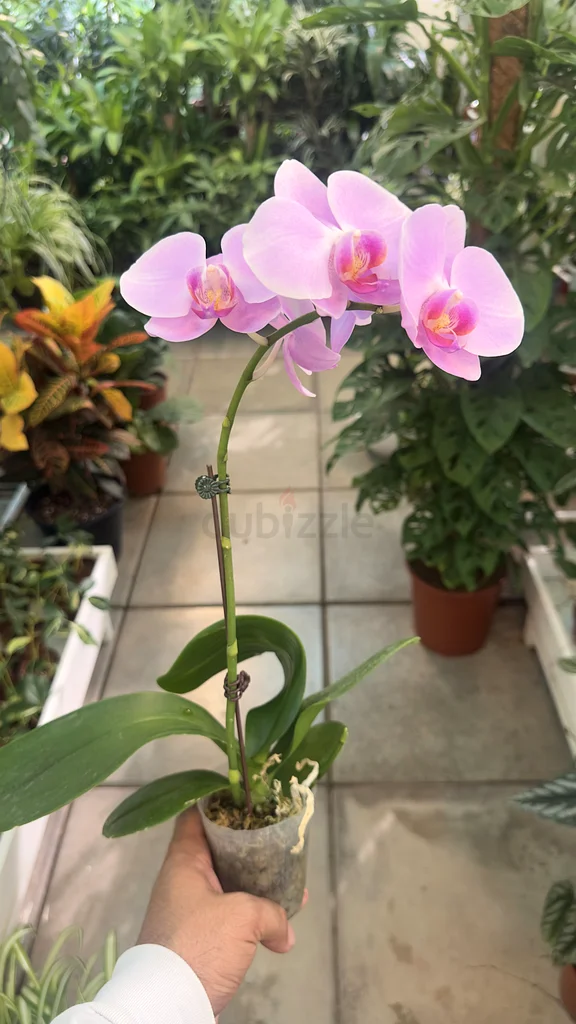
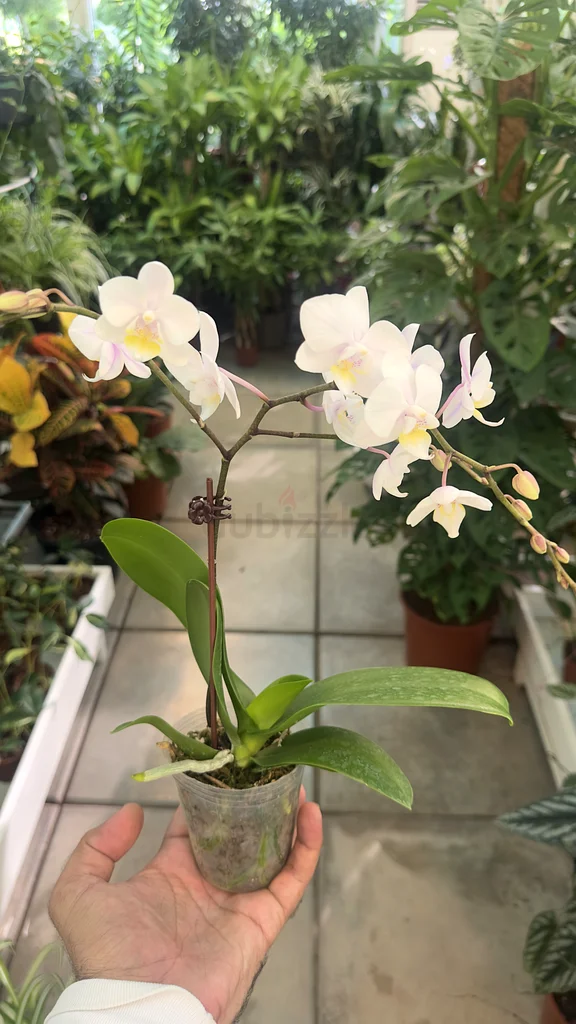
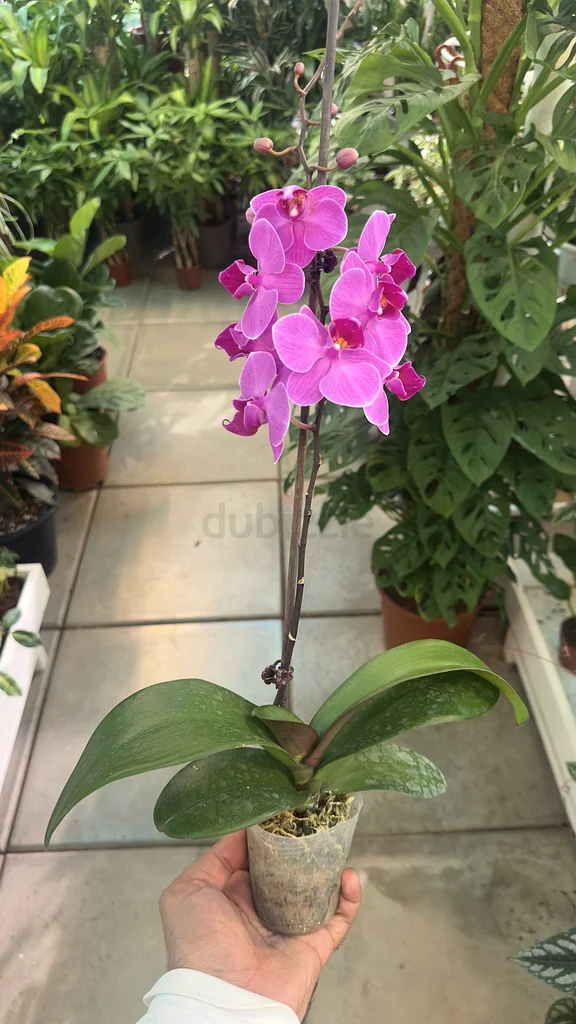
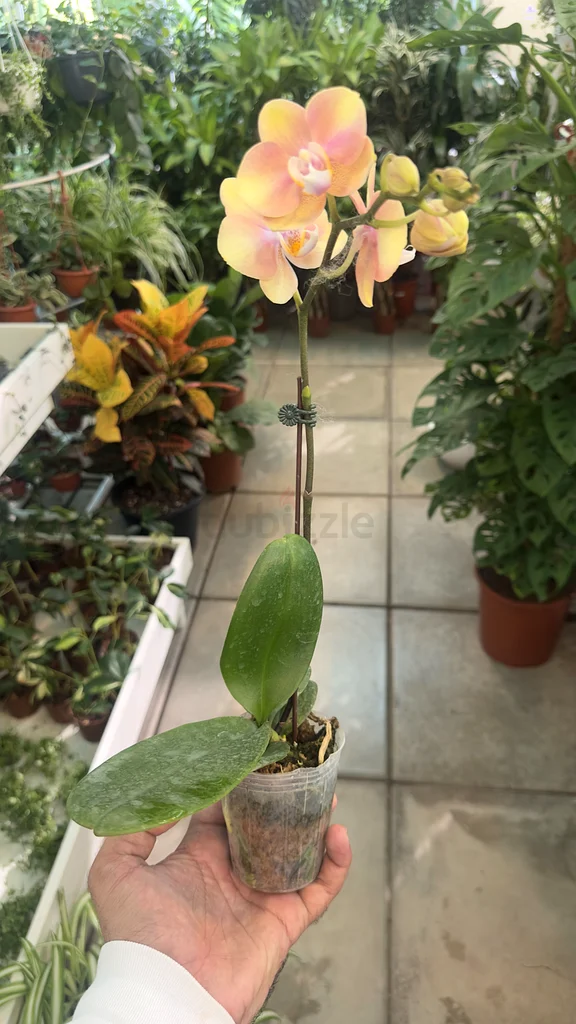
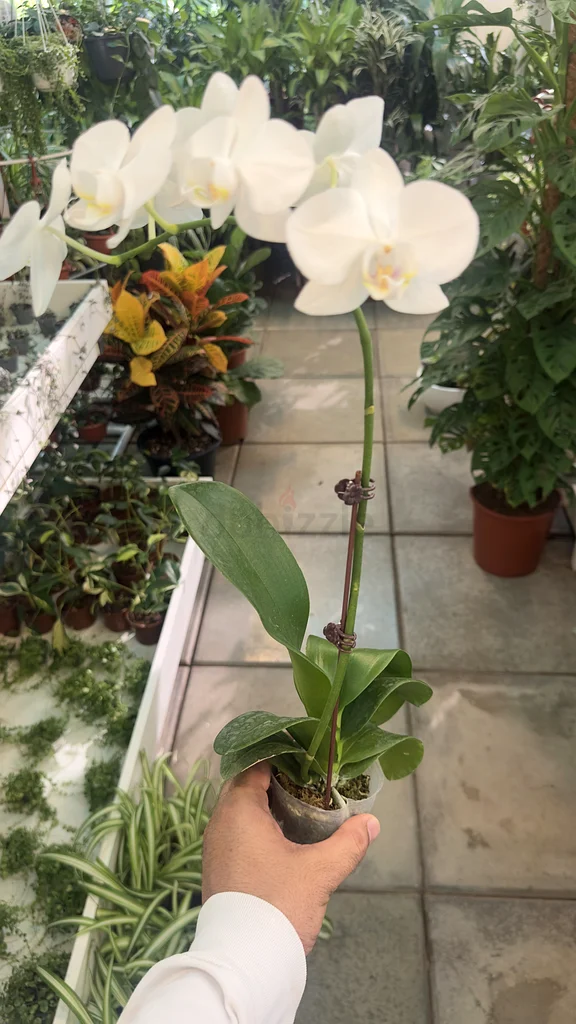
**Orchid** refers to a diverse family of flowering plants known as **Orchidaceae**. Orchids are admired for their unique and intricate flowers, making them popular as ornamental plants. Description: **Size:** Varies widely; can range from small (2-3 inches) to large (several feet tall). **Flowers:** Typically feature bilateral symmetry and come in a vast range of colors, shapes, and patterns. Some common flower shapes include butterfly-like, slipper-shaped, and star-shaped. **Leaves:** Generally long, narrow, and often leathery or waxy in texture. The arrangement and number of leaves can vary depending on the species. Growing Conditions: **Light:** Prefers bright, indirect light. Some species can tolerate lower light conditions. **Watering:** Requires regular watering; keep the growing medium consistently moist but not waterlogged. Many orchids benefit from occasional misting. **Soil:** Needs well-draining potting mix, often consisting of bark, sphagnum moss, or perlite. **Temperature:** Thrives in temperatures ranging from 60°F to 80°F (15°C to 27°C) and enjoys a stable environment with minimal temperature fluctuations. Orchids are appreciated for their exotic appearance and can be grown both indoors and outdoors, depending on the species and local climate.
